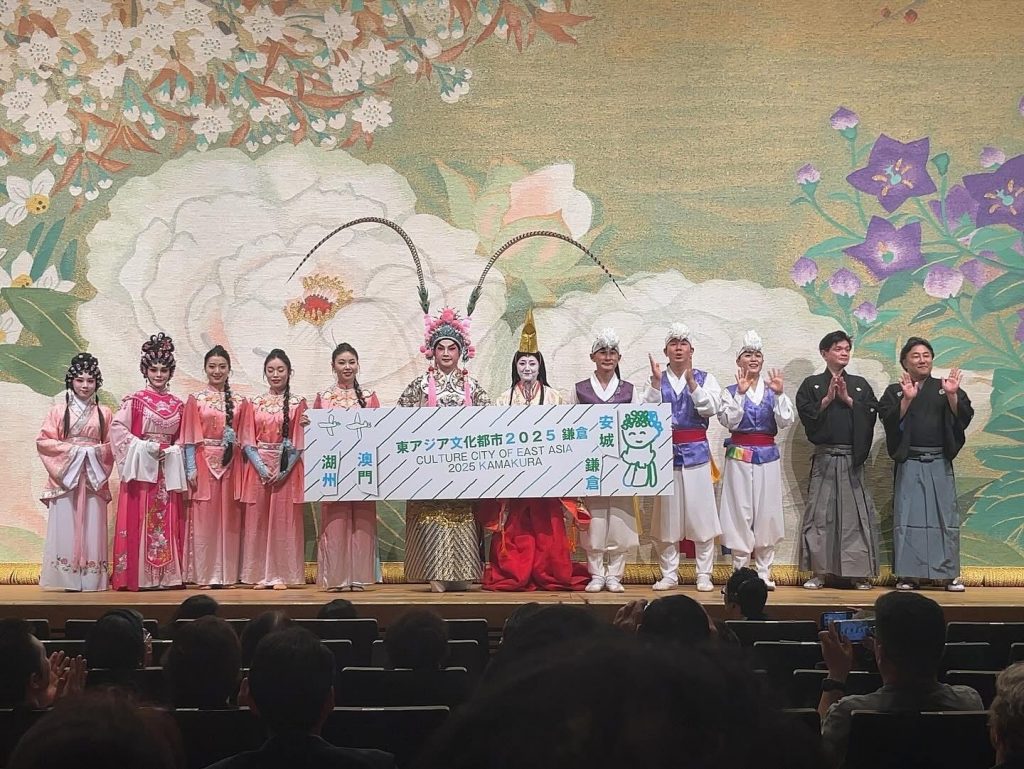
In 2025, Kamakura City has been selected to represent Japan in the East Asian Cultural Cities initiative—an international programme designed to foster mutual understanding and regional cooperation between Japan, China, and South Korea. The initiative promotes East Asia’s cultural richness by encouraging exchange through a year-long programme of events celebrating traditional and contemporary culture, the arts, and local ways of life.
The East Asian Cultural Cities project was established in 2014 as a trilateral initiative between Japan, China, and South Korea, born out of the Trilateral Culture Ministers’ Meeting. Its purpose is to promote mutual understanding, cultural exchange, and peaceful coexistence in a region with a complex shared history. By designating one city from each country each year, the project encourages collaborative cultural programming, including performances, exhibitions, and youth exchanges. It aims to strengthen regional ties at the city level, involve local communities in cultural activities, and raise the international profile of participating cities. Ultimately, the initiative uses culture as a form of diplomacy, building trust and shared identity among East Asian nations through the celebration of both traditional and contemporary culture.
Under the theme “The First Step Toward Kamakura in a Thousand Years,” Kamakura will host a series of cultural activities and artistic performances throughout 2025. These events will highlight Kamakura’s heritage as the seat of Japan’s first samurai-led government—the Kamakura Shogunate—established in the late 12th century by Minamoto no Yoritomo. Kamakura played a pivotal role in shaping Japanese political, military, and cultural life during this era.
The city also became a gateway for cultural exchange with China’s Southern Song Dynasty and Korea’s Goryeo Dynasty, introducing elements such as Zen Buddhism and Buddhist sculpture that helped shape Kamakura’s distinctive cultural identity—an influence still visible in its urban fabric and daily life today.
Kamakura is joined by the Macao Special Administrative Region and Huzhou City (China), and Anseong City (South Korea) as East Asian Cultural Cities for 2025. These cities will collaborate on a variety of joint events, including youth exchange initiatives and the high-profile opening ceremony.
At the opening event in Kamakura on 20 May:
Macao showcased The Gathering of Heroes, a classical Cantonese opera recognised as UNESCO Intangible Cultural Heritage;
Huzhou presented Sōsan Kachihana Art, rooted in traditional Chinese silk production culture;
Anseong performed Namsadannori, a Korean folk performance also on the UNESCO list;
Kamakura contributed Shizuka no Mai, a classical Japanese dance based on the story of Shizuka Gozen, a historical figure linked to the city.
Through this programme, Kamakura seeks to reflect on and share its centuries-old cultural legacy in the context of regional cooperation. By highlighting the interconnected development of East Asian cities, it aims to pass on cultural richness and values of peaceful coexistence to future generations—contributing to a broader message of peace from East Asia to the wider world.

